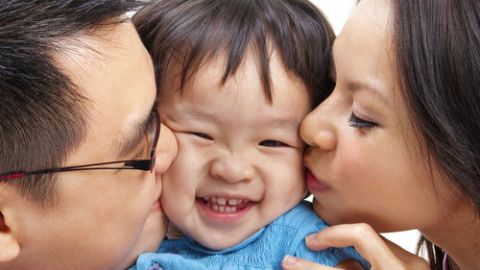Where have all the Children Gone?

American citizens adopted 13,407 fewer international children in 2011 than they did in 2004 – a 60% decline from that peak year. The biggest decrease has come from the adoption of girls – the ratio of boys to girls has gone from 0.54 to 0.79 – and children under the age of one who now represent less than 15% of all adoptions.
Data that is made publically available on the Department of Homeland Security website paints an interesting picture of how the adoption of children to the United States has changed over a very short period of time. [see chart at bottom of page]
Until the middle of the last decade international adoptions appeared to be increasing steadily year over year, with the characteristics of the children in terms of gender and age being fairly constant. After that point adoptions have fallen precipitously along with big changes in the relative adoption rates of boys and younger children.
China is by far the biggest supplier of children for international adoption, but changes in Chinese adoption policies alone cannot explain the decline in adoptions – although they probably can explain most of the change in gender composition since the adoption of boys from that country actually doubled over the same period.
Interestingly, the Canadian adoption rate of foreign children is completely unchanged over the same period despite adopting foreign children at a much higher rate than the US.
It has to be the case that a change in adoption rates for the United States this significant, during a period of global economic turmoil, has to have an economic story behind it.
At the individual level domestic parents may have changed their demand for international children in light of the current economic climate, or their predictions about the economic climate in the future, or foreign and/or domestic parents may have changed their supply of children for similar reasons.
At the national level domestic governments may have worked to stem the movement of foreign children into the country or adopted other policies that increased the adoption rates of domestic children, or foreign governments have worked to stem the movement of children out of their county or adopted other policies that reduced the supply of unparented children.
Usually when I post on a topic like this I can tell you what the economic story is because economic researchers have published papers on the topic that use the data available to tell that story. But as of right now, I can’t seem to find anyone who is looking for economic evidence to explain this remarkable change in trend.
So, I don’t have the story but rather write to encourage the telling of it. Behind these statistics lie stories of grief and sorrow, both on the part of parents who are struggling to bring their children home and on the part of children who are growing up in overflowing orphanages. I am looking forward to finding out why that has been the case.
Very warm thanks to the two wonderful women whose patience in waiting for their children inspired this post.





